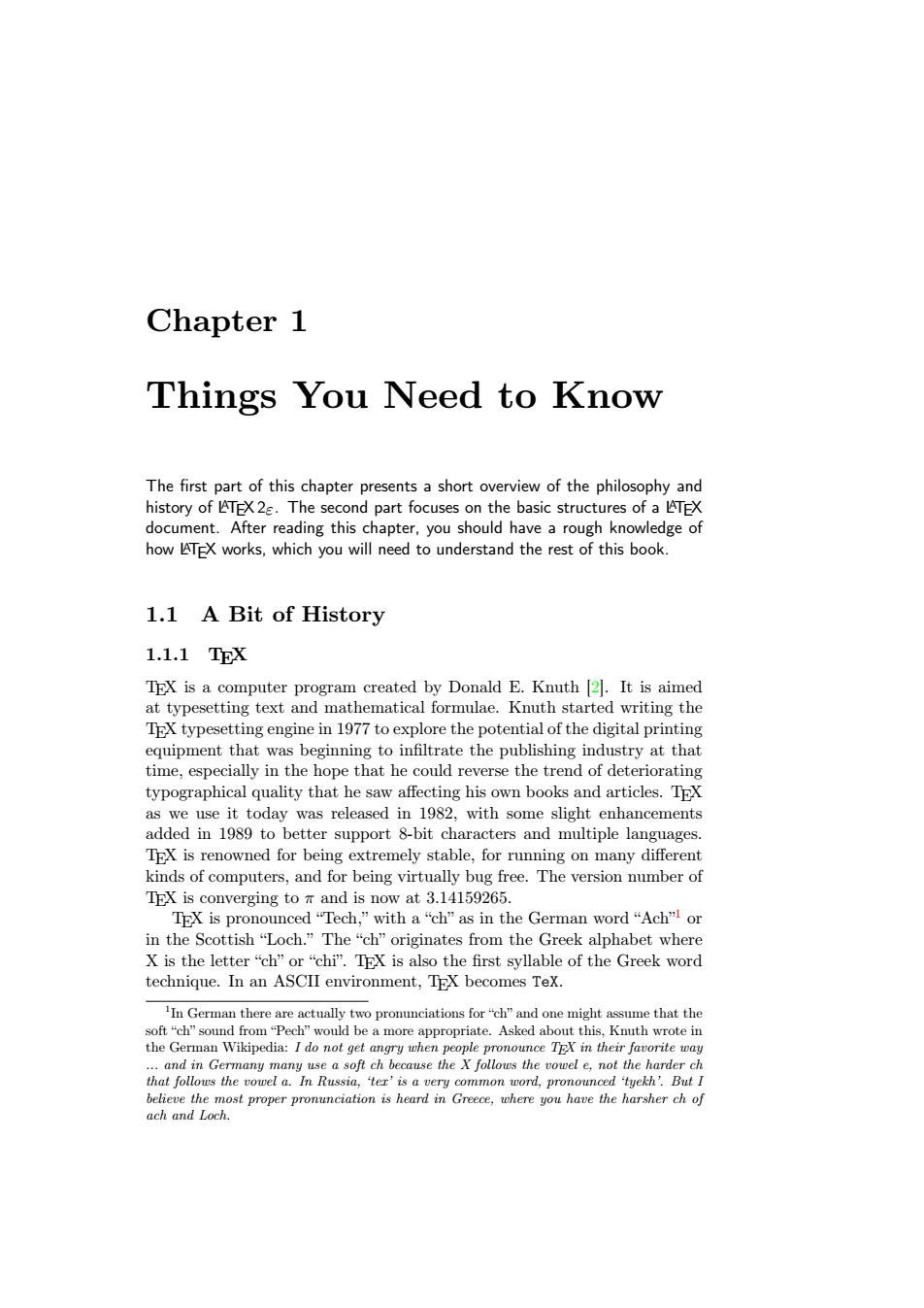正在加载图片...

Chapter 1 Things You Need to Know hhis chapter presents a short oweview of the phlcsophy anc ar how TX works you will p stand thisboo 1.1 A Bit of History 1.1.1X TEX is a computer program created by Donald E.Knuth.It is aimed natical formulae.Knuth start lore the equipment eginni that he c the p d typographical quality that he saw affecting his own books and articles.TEX as we use it today was released in 1982,with some slight enhancements added in 1989 to better support 8-bit characters and multiple languages TEX is renowned for being extremely stable,for running on many different kinds of computers,and for being virtually bug free.The version number of TEX is converging to and is now at 3.14159265 TEX is prono a C h”as in th G rman word“Ach ttish h echnique.In an ASCII nes Tex. of th 'In German there are actually two pronunciations for"ch"and one might assume that the ause the X follous the not the Chapter 1 Things You Need to Know The first part of this chapter presents a short overview of the philosophy and history of LATEX 2ε. The second part focuses on the basic structures of a LATEX document. After reading this chapter, you should have a rough knowledge of how LATEX works, which you will need to understand the rest of this book. 1.1 A Bit of History 1.1.1 TEX TEX is a computer program created by Donald E. Knuth [2]. It is aimed at typesetting text and mathematical formulae. Knuth started writing the TEX typesetting engine in 1977 to explore the potential of the digital printing equipment that was beginning to infiltrate the publishing industry at that time, especially in the hope that he could reverse the trend of deteriorating typographical quality that he saw affecting his own books and articles. TEX as we use it today was released in 1982, with some slight enhancements added in 1989 to better support 8-bit characters and multiple languages. TEX is renowned for being extremely stable, for running on many different kinds of computers, and for being virtually bug free. The version number of TEX is converging to π and is now at 3.14159265. TEX is pronounced “Tech,” with a “ch” as in the German word “Ach”1 or in the Scottish “Loch.” The “ch” originates from the Greek alphabet where X is the letter “ch” or “chi”. TEX is also the first syllable of the Greek word technique. In an ASCII environment, TEX becomes TeX. 1 In German there are actually two pronunciations for “ch” and one might assume that the soft “ch” sound from “Pech” would be a more appropriate. Asked about this, Knuth wrote in the German Wikipedia: I do not get angry when people pronounce TEX in their favorite way … and in Germany many use a soft ch because the X follows the vowel e, not the harder ch that follows the vowel a. In Russia, ‘tex’ is a very common word, pronounced ‘tyekh’. But I believe the most proper pronunciation is heard in Greece, where you have the harsher ch of ach and Loch